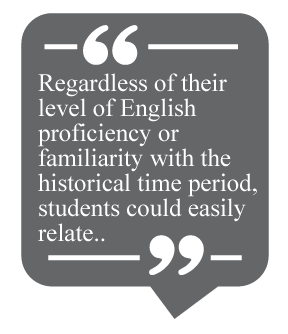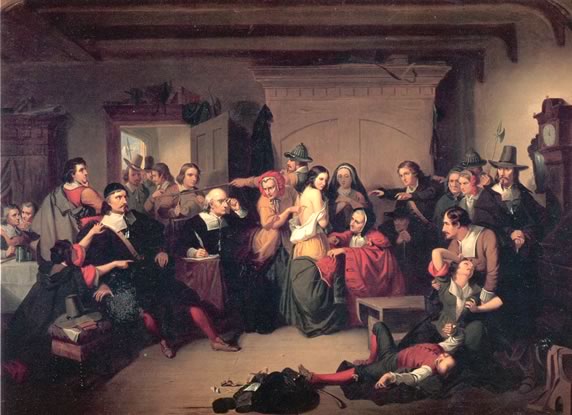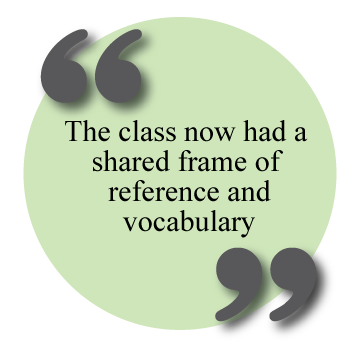|
 “Why can’t we just read The Hunger Games?” Most secondary English teachers have faced some variation of this question from their students. The specific novel being requested changes every few years, but the sentiment behind the comment remains the same: Why can’t we read easier, popular, more modern books for school? “Why can’t we just read The Hunger Games?” Most secondary English teachers have faced some variation of this question from their students. The specific novel being requested changes every few years, but the sentiment behind the comment remains the same: Why can’t we read easier, popular, more modern books for school?
The Compelling Argument for Classical Literature
Jago (2004) makes a compelling argument that classical literature exposes students to different worlds, cultures, and ideas that simply aren’t covered in “mirror texts” that reflect students’ own experiences and can usually be read and understood without a teacher’s help. She goes on to challenge teachers to “develop lessons that create scaffolding for reading rich literature” and to give “students who read below grade level and English language learners [opportunities] to read more, not less, than their peers in honors classes” (Jago, 2004, p. 4). Research in second language acquisition supports Jago’s ideas. Gibbons (2015) suggests that for English language learners (ELLs),
rather than avoiding books that carry any unfamiliar cultural or field content, or new language (an almost impossible task anyway), the challenge for the teacher is to build up the knowledge and understandings that are relevant to the text the children will read. (p. 144)
Building background knowledge is an important part of the Teaching-Learning Cycle in every content area (Derewianka & Jones, 2016), and the study of classical literature requires that students be taught specific skills that will help them navigate complicated texts before they engage with the texts themselves.
Prereading Activities
 1. Building Background Knowledge 1. Building Background Knowledge
I spent the first two months of the 2018–2019 school year teaching a college-prep level American literature course for high school juniors. In the class, approximately 50% of the students’ home language was Spanish. Among those ELLs, there were varying levels of English proficiency, from high-achieving bilingual students to students who had studied English in school in Mexico, but had only just moved to the United States a few weeks before the school year began and were very unsure of their speaking abilities. In the American literature course, all of these students would be asked to study complicated texts such as The Crucible, The Adventures of Huckleberry Finn, and The Great Gatsby, in addition to many shorter complex works over the course of the year. To help prepare them for the first of these texts, Arthur Miller’s The Crucible, I implemented several prereading activities designed to activate students’ prior knowledge and “build shared understandings of the topic[s]” we would be discussing over the course of the play (Derewianka & Jones, 2016, p. 53).
As I began the unit on The Crucible, I first wanted to determine what my students already knew about the historical Salem witch trials. I drew a simple mind map graphic organizer on the board, wrote “Salem Witch Trials” in the center circle, and asked students to share what they already knew about the topic. While a few students were able to share some general information—the trials were in Massachusetts, they thought women were witches—it became clear very quickly that most of the class did not have much knowledge of this moment in American history. Although this was surprising to me, I suspect this was encouraging for some of the newer ELLs in the class; all the students were approaching the text with similar levels of historical background knowledge.
2. Group Work to Build Vocabulary and Confidence
After providing the class with a few more historical details about the dates of the trials and the religious background of Puritan society, I then projected the image of Thompkins H. Matteson’s 1853 painting Examination of a Witch for the class (see Figure1). I asked the students to look at the painting silently for about 2 minutes and then turn to a partner and discuss what they thought were important elements of the painting.

Figure 1. “Examination of a Witch,” by Thompkins H. Matteson, 1853.
Regardless of their level of English proficiency or familiarity with the historical time period, students could easily relate to the emotional faces of the people depicted and the physical action of the scene. Then, with their partners, they were able to practice spoken language as they discussed what they noticed.
During these interactions, I noticed several communication strategies in use. For example, one pair of students was using language switching back and forth between English and Spanish as they discussed the painting, showing they understood the general concepts being discussed even if they did not have all of the English vocabulary necessary to discuss it yet. Another student with more English experience was then able to give them the vocabulary they needed (an appeal to authority) to share their ideas with the class. After having time to think about the painting individually and discuss it in small groups before sharing their ideas with the entire class, students were more confident about sharing their ideas. More important, the class now had a shared frame of reference and vocabulary that we could refer back to when reading the trial scenes in the play. (Brown, 1994)

3. Introducing Structure and Genre
A final prereading strategy I used before we began our in-depth study of The Crucible was an introduction to the structure and specific language features of the drama genre. As a class, we looked at sample pages from the play and discussed the different textual features: character names in all capital letters, stage directions in italics, and the actual dialogue in regular text. To further assist students with the unfamiliar vocabulary used in the stage directions of the play, I created bookmarks with terms like “Enter,” “Exit,” “Aside,” and “Black Out” along with brief descriptions of what each term meant when the play is performed. I encouraged students to use these bookmarks to keep their place as we read the play and refer to them as needed. By focusing on the text features of drama, ELLs were able to read this play more successfully, and they will also be better prepared for further studies in the genre.
Conclusion
All three of these introductory activities for The Crucible could be easily adapted to work with other classic texts in the high school literature curriculum. Historical information about authors and time periods is readily available online at various reading levels. A Google Images search can reveal artwork that relates thematically to the work being studied—some books and plays have even directly inspired painters and other artists. Finally, teachers can look carefully at the genre being studied and determine what features may be new to students and what they will need to know to be successful.
By introducing historical background information, thematically related images, and important genre characteristics, teachers can provide students with some of the necessary cultural knowledge that, according to schema theory, aids in the comprehension process (Gibbons, 2015). According to Gibbons (2015), prereading activities such as these will help ELLs to “be less dependent on the words on the page and…be able to minimize the disadvantage of having less than native-like proficiency in the language” (p. 147). Teachers that take the time to build their students’ schema through carefully planned prereading activities can help ensure that all students are given access to some of the world’s most imaginative stories.
References
Brown, H. D. (1994). Principles of language learning and teaching. San Francisco, CA: Prentice Hall Regents.
Derewianka, B., & Jones, P. (2016). Teaching language in context. Oxford, England: Oxford University Press.
Gibbons, P. (2015). Scaffolding language scaffolding learning: Teaching English language learners in the mainstream classroom. Portsmouth, NH: Heinemann.
Jago, C. (2004). Classics in the classroom: Designing accessible literature lessons. Portsmouth, NH: Heinemann.
Julia Muething is a high school English teacher who recently earned additional certification in TESOL from the University of Cincinnati. She holds a BA in English and professional education from Xavier University and an MAT through the Ohio Writing Project at Miami University. Julia has 10 years of classroom teaching experience, including 8 years teaching AP English Literature and Composition; she has also served as a reader for the AP exam.
|